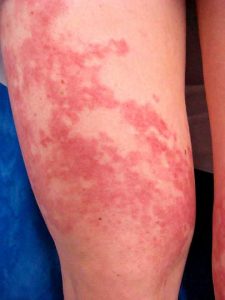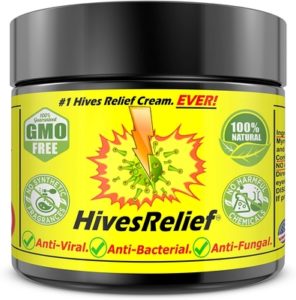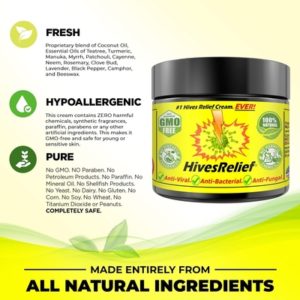
There are two types of urticarial vasculitis: one where the patient has normal levels of proteins – known as complements and one where the levels of complements are low.
When the patient has normal levels of complements, they have a condition known as normocomplementemic vasculitis. Though this is a long and complicated word, it simply means that they have normal levels of proteins.
When the patient has low levels of complements, they have a condition known as hypocomplementemic vasculitis. That is also a very long complicated word, but I’m going to simplify it.
Let’s refer to it as hypo-vasculitis.
Hypo-vasculitis is very rare but is signified by low complement (protein) levels in the blood that may be a signifier of another, underlying condition. These proteins help the immune system function properly and play a role in the development of inflammation. Low complement levels may signify a handful of different ailments, such as cirrhosis, hepatitis, lupus, or malnutrition.
What Causes It?
As with many cases of urticaria, the exact cause may remain unknown. Your doctor may test you for a variety of different illnesses that may be causing it, such as leukemia, thyroid problems, arthritis, different types of cancer, or hepatitis.
Urticarial Vasculitis Symptoms
The symptoms of urticarial vasculitis differ from traditional urticaria. Though some of the same symptoms are present in both conditions, including itchy, red, inflamed portions of the skin with noticeable bumps, there are a handful of symptoms that will point a doctor towards urticarial vasculitis.
As opposed to traditional urticaria, itchiness isn’t as prevalent as other symptoms. When inflamed blood vessels are the cause of your hives, the hives will be more painful and you may feel a burning sensation.
In addition, some patients report sensitivity to light, swollen glands, fever, nausea, joint pain, chest pain, or difficulty breathing. When the hives go away, they may leave behind scars or skin discoloration where they once were.
How Do I Know I Have It?
Because urticarial vasculitis tends to look like traditional hives, you will need to see a doctor in order to receive an accurate diagnosis. When a doctor takes a look at your afflicted skin, he or she will determine the diagnosis through a skin biopsy.
This process includes retrieving a sample of the skin tissue of the affected area and examining it under a microscope. The exact method of retrieving a sample of the skin may vary depending on how large your hives are and what part of the body the skin sample is being retrieved from.
Urticarial Vasculitis Treatment

When a patient is afflicted with this condition yet has normal complement levels, there is typically no underlying disease or organ damage. When this is the case, the urticarial vasculitis tends to improve on its own without the need for additional treatment.
When symptoms are particularly bothersome, a simple natural homeopathic antihistamine remedy may be used to alleviate itching and swelling. When the patient has low levels of pain, ibuprofen may be taken.
However, when the patient has low complement levels, it is often due to another condition that needs treatment of its own. In more severe cases, corticosteroids may be administered (anti-inflammatory drugs that help reduce swelling). Other medications may be prescribed depending on the particular underlying condition – it’s important to speak with a doctor to determine the best method of treatment.
For a comprehensive program to eradicate hives which we have found to be beneficial and helped our youngest son Darcy enormously.
Are There Any Complications?
The most common complications of urticarial vasculitis are scars and skin discoloration where the hives once were. In some cases, skin ulcers may develop as a result of the condition. In more severe cases, vital organs may be damaged, such as the kidneys or lungs.
When Should I See a Doctor?
If you have hives that don’t go away after a couple of days, it’s important to see a doctor as soon as possible to determine the cause and whether or not it is urticarial vasculitis.
If you have hives or urticarial vasculitis symptoms coupled with severe symptoms such as difficulty breathing, it’s important to go to the hospital right away.
Click here to read more on what are Hives.
From our hearts to yours,





